Note. The page is still under development so not everything will work yet! We look forward to seeing you again soon.
The Dollar Baby Program ended on December 31, 2023. So making your own baby in this composition is no longer possible. What is possible is to make a short film given that you are inspired by Stephen King. The method is exactly the same. Only now you no longer have to ask for approval. And perhaps a change or adjustment in the title and you are ready to make your own film adaptation where Stephen King is your inspiration. 🙂
Continue to “How to Make a Short Film”!

Making your own (Dollar-) Baby
Movies we watch them almost daily. Whether at home on TV or in a cinema.
Stephen King “the” famous horror writer from Maine, America gives students and other delegates the opportunity to film one of his (short) stories.
So if you think I’m going to make it (note Frank Darabont also started that way more than 40 years ago) in the film industry, this is a unique opportunity.
Now you wonder, what can I choose from… which story. Well that makes Stephen King very easy for you. Go to https://stephenking.com/dollar-baby/ and choose a story. We appreciate it if you also inform us what you have chosen after your application has been approved 🙂
You will automatically receive a message from his office and what conditions apply. When you have paid 1 dollar ($1) you will receive another message from his assistant with the possible approval.
You have the approval and then… then you make your own film. The steps below will help you get started!
How to Make a Short Film
If you’re an aspiring director that wants to start a lucrative filming career, you should start by creating your first short film. While it can seem like a daunting task at first, you actually don’t need that much to create an entertaining short film of your own. With the proper pre-production, equipment, and know-how, creating an engaging movie is just a matter of having good ideas and utilizing common filming techniques.
Creating the Script and/-or Storyboard

Think of an idea for a short film. Think of a short story that you want to tell in under 10 minutes. Focus on one core idea so that the short story isn’t overly complicated. Consider what kind of tone you want for the film and whether it will be a horror, drama, or experimental movie.
- Think of an interesting event in your own life and use it for inspiration for your script.
- Consider the scope of the story and whether you can convey the story on the budget that you have.
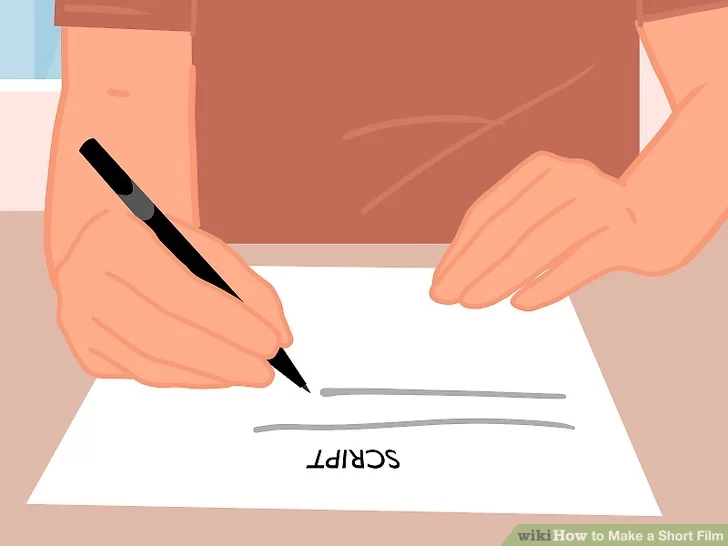
Write a short script. If you are an aspiring screenwriter, you can write your own script. Short films should have a beginning, middle, and end. A ten-minute film will only be about 7-8 pages long.
- If you don’t have a lot of money to work with, you don’t want to write a script that includes explosions or expensive digital effects.
- As you write, think about your potential audience and viewers. You should aim to satisfy them and give them what they need to understand your idea and the story you’re telling.

Draw a storyboard. A storyboard is a series of pictures that outline what will happen in each scene. These pictures don’t need to be detailed or artistic, but clear enough so that you get a good idea of what each scene will look like and what will happen in it. Creating a storyboard before you start filming will also help you stay on task during the shoot and will save time from having to think of things on the fly.
- If you aren’t artistic, you can use stick figures to represent the actors and simple shapes to represent the elements in the scene.
Fundraising Online

Understand the method. In some ways, fundraising online is not much different than fundraising in the physical world. You still need to be able to effectively communicate your needs, tell stories that illustrate your work, and motivate people to make a donation to your cause. The difference is that while in the physical world you may have time to build a relationship with a potential donor, that isn’t always the case online. They may only come across your website once, so you may only have one shot at convincing them to give. Therefore, it’s even more important to communicate your message in a compelling way. Here are some ways to do it.

Set up a web page. The most basic way to raise funds online is to set up a webpage for donations, then let people know to go to that page to make a contribution. Include the link in written and electronic communications you send to your members or constituents. Make sure it’s accessible from your home page, and other pages of your website. Keep these tips in mind.
- Most donations made online are done by credit card transaction. If you are not already set up to accept credit cards, there are a number of companies that provide credit card donation processing services for a fee.
- Offer the option of recurring donations. Recurring donations can benefit your organization in a few ways. Many donors find it easier to make a larger donation if its split up into quarterly or monthly payments; some very committed donors may want to make an annual donation to you. Make this as easy as possible by setting up recurring payments. Ask your online donation processing service how to offer this to your donors.
- Some organizations opt to accept online donations through PayPal. Visit PayPal’s website to learn more.

Consider crowdfunding. Crowdfunding combines online fundraising with social media to help individuals and organizations raise funds. it’s a way for many individuals to pool their resources and donations to get projects funded. Donors can typically contribute as little as $1.00, making it easy for lots of people to participate. There are several websites set up for crowdfunding. Funds-seekers create a campaign page describing their project or organization, and explain how the funds will be used and what, if any, benefit donors will receive for participating. Here are some tips on fundraising using crowdfunding.
- Crowdfunding is particularly well suited for funding discrete projects.Rather than launch a campaign asking for all the money you need to operate a program, consider how you can break it up a bit. For example, a school music program could launch a campaign to purchase 10 instruments for low income students.
- Articulate your needs and your project clearly. The clearer you can be about why you need the money and how you will use it, the better.
- Get creative. Add media to your campaign page to increase readers’ interest. Videos, images and success stories are great for telling your story, so use them to your advantage.
- Some of the most common are Gofundme.com | Kickstarter.com | Indiegogo.com
Completing Pre-Production

Scout for locations. Find locations to match the script. Ask small businesses and shops if you can use their locations for a short film. If the film takes place indoors, you may be able to use your own apartment or house. If the shoot is happening outdoors, find a safe and legal place to film.
- Getting permits to shoot on private or public property can sometimes be very expensive.

Get actors for the movie. If you have a budget to hire professional actors, you can put out a casting call for the script and then hold auditions for the movie. If you’re just trying to create your own personal short film, asking family and friends to act in the film is an easy and affordable way to get a cast for your movie.
- Look for actors that can embody the role in the script. Have them read lines to you to see if you think they would be a good fit for the part.

Recruit a crew. A crew will help you on the various aspects of shooting a short film like cinematography, production, lighting, editing, and sound. Depending on your budget, you may be able to hire professionals or you may have fill some of the roles yourself.
- If you don’t have a budget, ask friends who are interested in filmmaking if they would be interested in working on the movie for free.
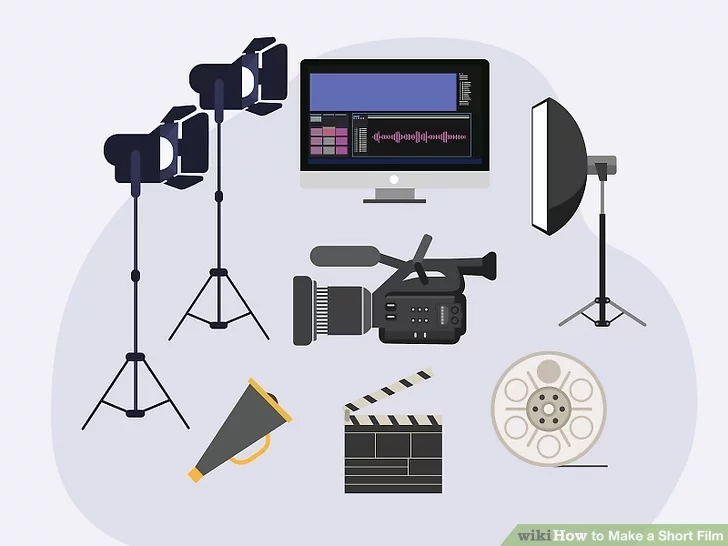
Purchase or rent filming equipment. To shoot a short film, you’ll need a camera, lights, and something to record audio. Select filming equipment that meets your needs and your budget. If you’re on a small budget, you can usually find a digital camera for under $100 or you can even use the camera on your phone. If you have a larger budget, you can opt to get a more expensive DSLR camera, which can cost thousands of dollars.
- If you want to take steady shots, you should purchase a tripod.
- If you’re shooting during the day, you can try to use sunlight for your lighting source.
- If shooting inside, you’ll need to get light clamps and flood lights.
- For sound, you can get a more expensive boom mic or you can opt for cheaper external audio recorders or small wireless mics.
- The external mics on many cameras aren’t great for picking up actor’s dialogue.
Shooting the Film

Rehearse the scene. Once the actors get onto the set, have them go through a basic reading of the script. Then, have the actors act out the scene. As they go through the scene, tell the actors what you want them to do, how to interact with the environment, and let them know of any modifications that you want to see in their acting.
- This process is known as “blocking the scene.” The read through of the script can be done anywhere, but you should try to do the blocking on set.

Dress the actors in their costumes. If the role requires a certain type of clothing or makeup, you’ll want to make sure that your actors are in character before you start shooting. After you rehearse the scene, give your actors the clothes or costumes that they need to wear.
- If the actors have to wear a cultural or religious piece, such as a hijab or yarmulke, be sure to study it. Don’t just throw the piece on; be as accurate as possible.
- If you are on a tight budget, you can have the actors provide outfits from their own wardrobe, but make sure that what they find meets your vision.
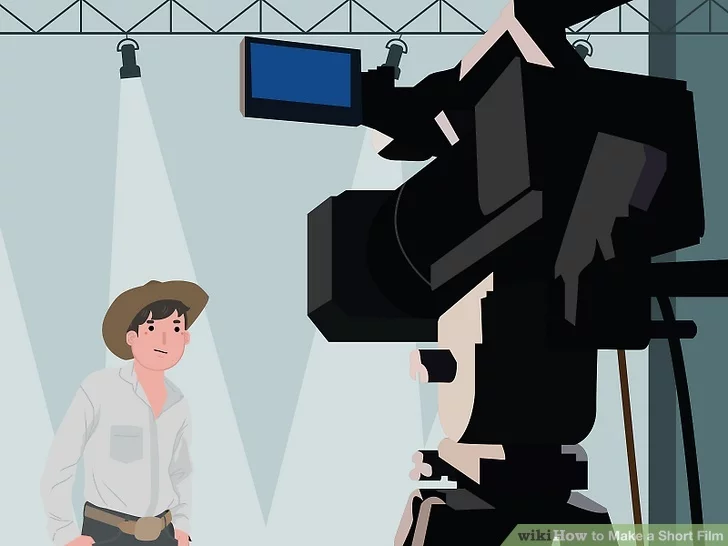
Film the scenes in the movie. The storyboard that you created earlier will give you a shot list. Work around actor’s schedules and take advantage of days when your filming location is free for filming. If you have access to a certain location, try to film as many scenes as you can while you’re there. This will save you time and prevent you from having to revisit shoot locations.
- You don’t need to shoot the movie in chronological order. You can shoot whatever scenes are the easiest to do, then order them during post-production.
- Plan ahead for outdoor scenes, especially if you have specific weather in mind, such as a gloomy, rainy day or a bright, sunny afternoon

Focus on visuals. Because your film is short, the narrative will sometimes matter less than the visuals that you are showing the audience. Choose locations that are visually impressive and make sure that the lighting complements the overall scene.
- Make sure that the frame is in focus and that there’s nothing obstructing or interfering with the shot.
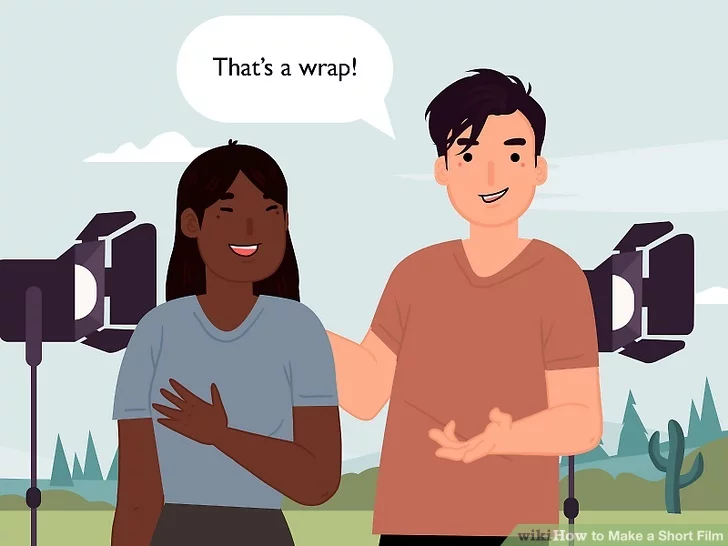
Thank your cast and crew once shooting has finished. Once you’ve filmed all of the scenes in your storyboard, you can send the film to post-production for editing. Thank everyone who worked on the film and let them know that you’ll contact them once the film is finished.
- You can thank everyone as one big group, or you can do it in smaller groups, such as: actors, crew, costume and set designers, etc.
- If someone is unavailable that day, be sure to thank them personally, either face-to-face or by phone.
- If you encountered any difficulties, such as unexpected weather changes or taking longer than expected, you could thank them with a pizza party later on.
Editing the Film

Upload the film to movie editing software. Upload the video files into video editing software. Organize each of the scenes into bins or folders so that you have access to the video files quickly. This will help keep you organized while you work. Once the files are transferred and organized, you can start cutting them up and editing them.
- Examples of video editing software includes: Avid, Final Cut Pro, and Windows Movie Maker.
- Choose a program that is easy for you to use and that can perform the exact sort of editing that you need.
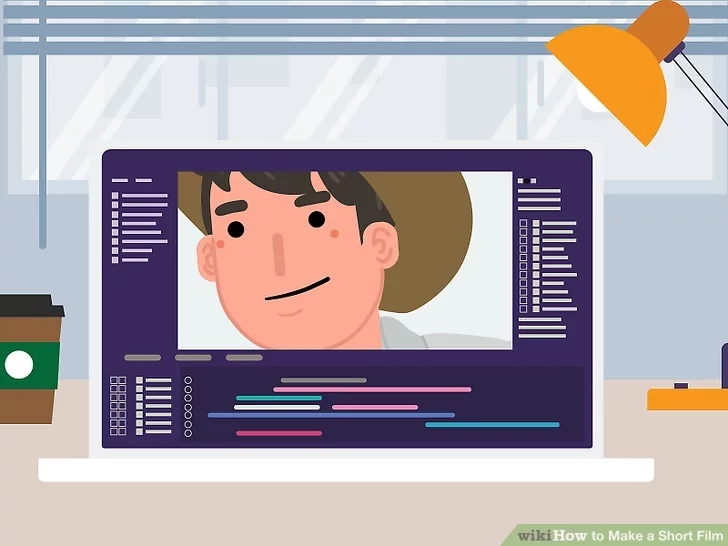
Do a rough cut of the scenes. Start putting the shots in chronological order. Review them as you go along and check for continuity and flow. During the rough cut, you’ll want to make sure that the story makes sense.
- Make note of any areas that don’t flow as you watch the film. You can then reorganize it later. In some cases, you may have to re-shoot a scene.
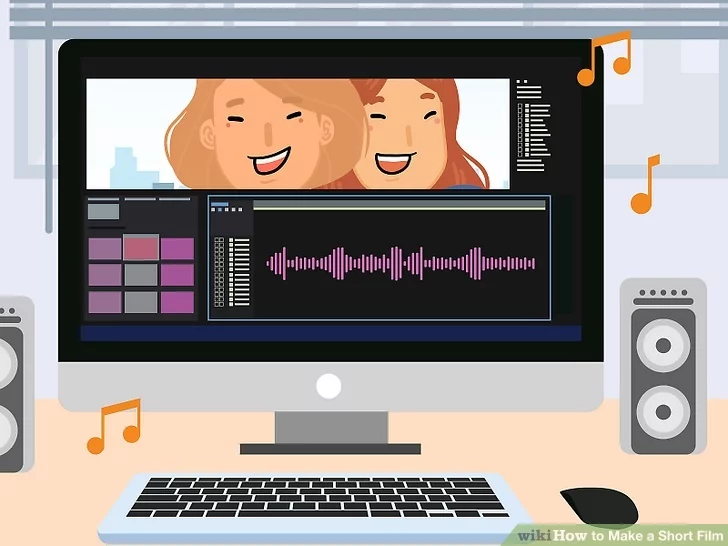
Add audio. Add the audio tracks of the actor’s dialogue and match it up with the video. You’ll also want to take this time to add any music or sound effects that you want in the movie.
- Keeping the audio tracks and sound effects separate from the video is important. This will allow you to adjust things like volume without affecting the video.
- Keep the background music and sounds at a lower volume when people are talking. If they are too loud, you won’t hear the actors.
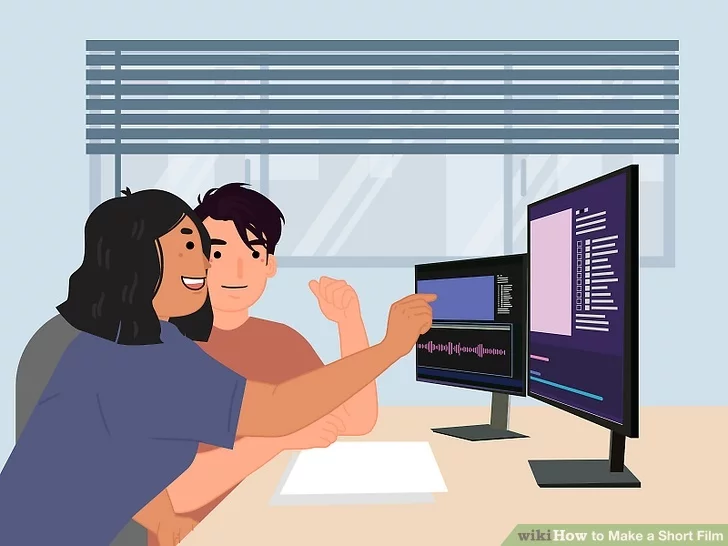
Analyze and tighten up the scenes. Once you have a decent cut of the film, review it with the producer and other editors. Take people’s feedback and criticism and then go back and re-edit the film. Concentrate on flow and pacing during the second edit.
- Implement editing techniques like fades to transition scenes.
- If a scene feels like it’s staggering or sluggish, you can tighten up the dialogue by adding cuts in between actor dialogue.
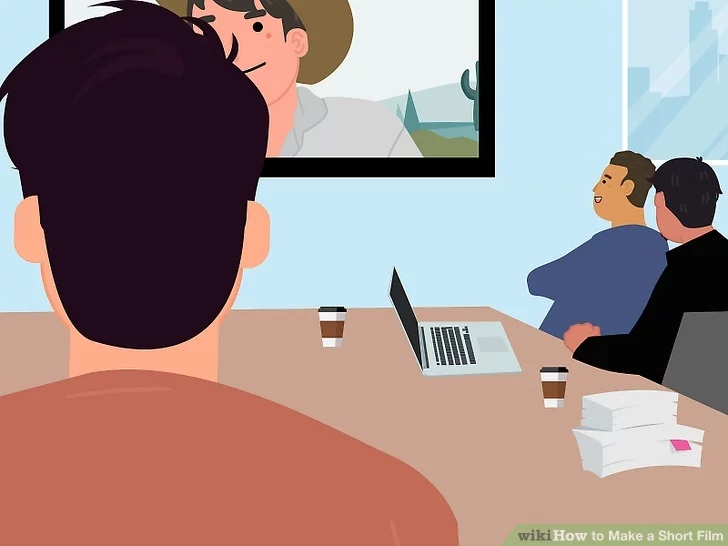
Review the film and create a final cut. After you’ve tightened up the movie, review the movie one last time with the producers, editors, and directors. Get final input on any details that need to be added or altered or issues that may have occurred during editing.
- Once all of the people producing the film agree on the final product, you can start showing your short film to people.
Source: Wikihow.com













